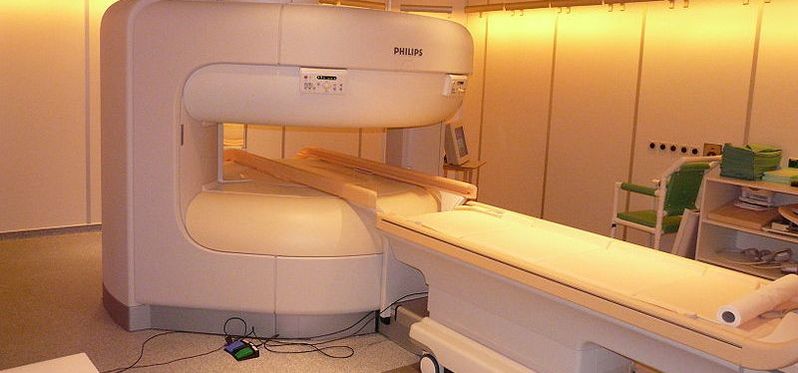NAH, SURELY NOT?
- NUMBER ONE: Numerous conditions that cause pain are “Functional” and not pathological. Fail to understand the difference at your own peril.
- NUMBER TWO: You need to be aware that in the absence of positive MRI findings (particularly when it comes to your spine) DJD will get undue amounts of credit for your pain.
FUNCTIONAL PROBLEMS -vs- PATHOLOGY
Let’s start by talking about the various potential results we can get on an MRI. The first thing we might find out from an MRI is that you are not textbook-normal on the inside. There are an almost endless number of variations of normal anatomy. These are called “anomalies“, and are unbelievably common. These can in no ways be confused with pathology. Next we have pathology. Pathology is finding something like a tumor, aneurysm, or ruptured disc. The problem, however, with ruptured discs is that between 50 and 70% of the asymptomatic adult population of America has these, yet does not realize it because they have no pain (YESTERDAY’S BLOG). Thus, it is difficult to truly characterize these as “pathology“. It is the fact that the predominance of people’s pain is being caused by “Functional Problems” that seems to frequently trip up the medical community.
Functional Problems are just what they sound like —- problems with function. A perfect example of this are the people found in our PATIENT TESTIMONIAL VIDEOS. Many of these people went through numerous tests, including MRI’s —- some more than once. Doctors look at their scans and tell many of this group of patients that they cannot find anything wrong with them (hey, they have no pathology present). Standard medical fare involves prescribing pain relievers, muscle relaxers, and anti-inflammatory medications. Not only does this not work, it does not sit very will with people who are actually interested in addressing their problem as opposed to simply addressing their pain —- and yes, there is a huge difference between the two. When joints (whether in the spine, shoulder, wrist, knee, etc,) do not work properly, people will end up with pain. This is the whole point of websites like DESTROY CHRONIC PAIN, DESTROY TENDINOSIS, DESTROY PIRIFORMIS SYNDROME, and SPINAL DECOMPRESSION MISSOURI.
You need to be aware that in the absence of pathology, it is highly likely that you will be told that your problem is due to DJD.
NEGATIVE MRI FINDINGS & DJD
DJD stands for Degenerative Joint Disease, and is the ultra-convenient scapegoat that doctors head for when scans show no pathology in the presence of pain. This is because degenerative findings stick out like a sore thumb. It is too easy to show people things like thin discs, loss of joint space, or bone spurs (all are extremely common); grab the patient’s hand, and say something like, “Mrs Jones —– you’re just not as young as you used to be“.
I work with degenerative spines all day long. I can tell you with authority that degenerative changes in and of themselves are not usually the cause of pain. I have lots and lots of patients that have very degenerative spines, but for the most part do not have inordinate amounts of pain. On the other hand, I have patients that have seemingly little degenerative changes in their spines, yet have incredible amounts of pain. What gives?
Much of this can be understood in a Review of the Scientific Literature on the subject that was published in JMPT (Journal of Manipulation and Physiological Theraputics) in the summer of 1997. After extensive review of numerous studies on the subject, the authors concluded that, “there is no correlation between pain levels and the extent of degeneration detected by radiographic or physical examination.” Believe it or not, this is still the consensus in medicine today, with numerous studies telling us the same thing.
However, the medical community has pulled off a brilliant stroke of marketing (brainwashing might be a better term) by changing the name of these degenerative changes from “Degenerative Osteoarthritis” to “Degenerative Joint Disease” (DJD) —- thus convincing millions of Americans that they have a “disease” in their spines. Let’s take a look at the truth behind most cases of joint degeneration.
Interestingly enough, a know cause of degeneration in any joint, is loss of, or abnormal motion in that joint. This is true whether we are talking about knees, wrists, ankles, spines, etc. If a joint is not moving properly (for any reason), it is wearing; and if it is wearing, it is moving even worse. Repeat this cycle ad finitum, and joint deterioration becomes like a snowball rolling down a mountain. The faster it rolls, the bigger it gets, and the bigger it gets, the faster it rolls. Although doctors know this, they will rarely tell you about it. They will run test after test after test over a period of years, telling you that nothing is wrong with you —- until one day, these degenerative changes finally show up on an MRI or CT. This is when you will be told you have a “disease“.
What you need to understand is that DJD is not a disease in any real sense of the word. It is a mechanical problem that has fed itself to the point is wearing joints out. Bear in mind that most of the time, this is driven not simply by abnormal joint mechanics, but by poor diet, obesity, a sedentary lifestyle, and numerous sources of INFLAMMATION. If you will take the time to understand inflammation, and do the things it takes to control it, you can help your cause tremendously.
The beauty of the approach taken by Dr. Schierling at Schierling Chiropractic LLC, is that the approach is meant to attack joint degeneration on all of the fronts. We break the scar tissue that restricts joint motion, adjust the joints to fire off mechanorectptors to the brain (HERE), and then put people on strengthening, stretching, and rehab programs to restore joint function.

